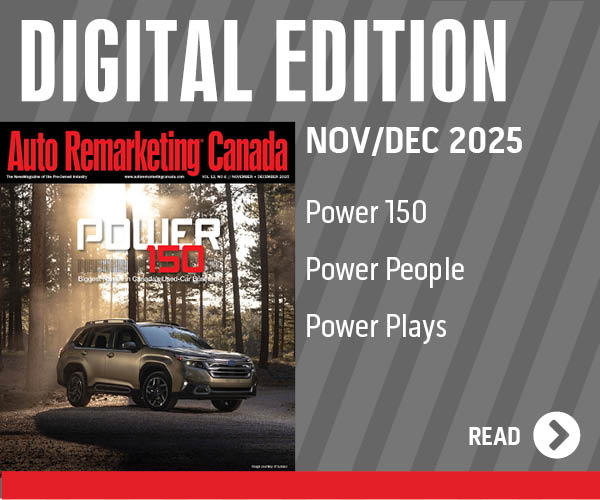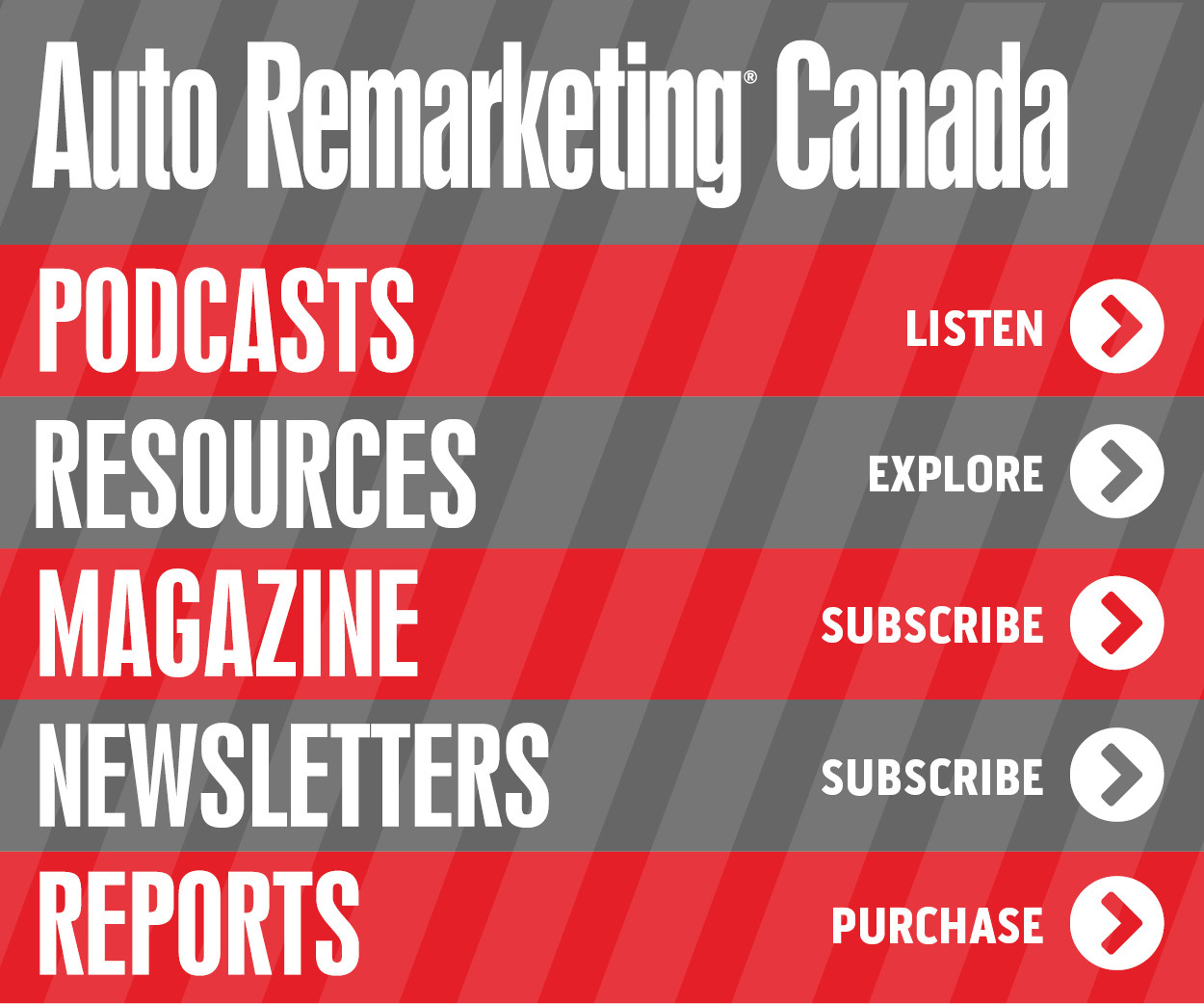Diverse, inclusive workforce can drive financial performance

By subscribing, you agree to receive communications from Auto Remarketing and our partners in accordance with our Privacy Policy. We may share your information with select partners and sponsors who may contact you about their products and services. You may unsubscribe at any time.
Workplace culture. It can feel somewhat like a nebulous term, one that may not have always played such a key role in a company strategy just a few years ago. But now, with industries across most all sectors looking to foster a more inclusive, diverse, safe workplace, positive company culture is top of mind and a key part of any business strategy.
It serves as a way to underline your objectives and can often help recruit and retain quality employees — and the specific types of employees your particular organization is looking for. Further, it can impact performance after the initial hire as well.
Lisa Price, who was named KAR Global’s first chief people officer earlier this year, spent the previous six years reshaping the human resources business partnerships and administration at the company. Her move into this latest position, according to Price, “aptly emphasizes the laser focus on our greatest asset: our employees,” of which there are more than 15,000 at the publicly traded company that includes auto auction giant ADESA.
As for Price’s top priority in her new position: “A continued focus on culture is an absolute priority in this role.”
“Shaping and cultivating our culture requires constant effort and messaging … a strong business case to support people and resources to execute on our pillars,” she said.
The HR leader for KAR Global pointed out studies consistently show that having a diverse workforce drives financial performance.
Subscribe to Auto Remarketing to stay informed and stay ahead.
By subscribing, you agree to receive communications from Auto Remarketing and our partners in accordance with our Privacy Policy. We may share your information with select partners and sponsors who may contact you about their products and services. You may unsubscribe at any time.
“My candid view is that a women-friendly, inclusive company culture is one in which gender doesn’t serve as a distinguishing characteristic and in which leadership genuinely cares about employees and their professional development,” she said. “I advocate for family-friendly workplace policies and practices on behalf of our recent college graduates, new parents, grandparents, employees without children and those whose pets are valued members of their family. The fact is that every one of us needs a bit of flexibility at times, paid time off, robust benefits, development and opportunities from our workplace — regardless of gender. “
Samantha Cunningham Zawilinski, vice president of account services at Potratz Advertising, echoed that sentiment. She said it’s often helpful when trying to create an inclusive, women-friendly culture to consider your own behavior and preferences as managers. This can often help create a more understanding approach to management, and therefore a potentially more diverse workplace.
“For example, I know a lot of individuals who need flexibility in their schedule. They need to be able to leave in the afternoon and pick up and drop off their kids in the morning,” she said.
They have no problem doing the work, but their availability may be different from your other employees.
“So, creating new ways to approach opportunity instead of thinking of it as just a challenge can also make it (the auto industry) a more female-friendly environment and people-friendly environment, for that reason,” Cunningham Zawilinski said.
But, that said, it’s no secret to Price, Cunningham Zawilinski or others that the auto industry is traditionally a male-dominated business.
But “inclusion success” can start with diverse recruitment efforts identifying and developing high potential employees.
“Shine the spotlight on your female leaders. Lean into their development and industry participation. Provide stretch assignments and challenges to showcase their talent. Offer as many introductions and opportunities as possible,” Price said. “Leaders must be committed to the vision, and carry it forward daily.”
Keys to a healthy company culture
When asked about the keys to a healthy company culture, many professionals we spoke to came back to two things as the backbone to success in this area: listening and communicating.
Price put like this: “Listen. Ask. Listen some more,” and “communicate with your employees — to the point that it may feel like too much communication.”
Communications includes promoting an open dialogue, and making sure your employees feel valued; for example, recognizing hard work, birthdays or anniversaries.
As for practical ways for management to actively listen to employees, these tactics include tools like new-hire surveys, interviews with current employees, employee engagement surveys, focus groups, town halls and more.
“The value of a conversation cannot be understated,” said Price.
Also consider taking a walk down memory lane, by perhaps revisiting your company’s mission or purpose, and values, to ensure they are current.
Price said company leaders should ask questions like:
— Are the company’s values current?
— How frequently and transparently are leaders communicating?
— Are we infusing our values into all company processes, including recruitment and development?
— Are we reacting to what our employees are saying?”
The workplace challenges of today
There are many challenges in workplace unique to this era, and the new decade. These include “predicting and delivering the talent needed to drive business transformation,” says Price.
Breaking this down further, it’s about identifying and closing talent gaps, predicting future workplace needs and skills, employee development, diversity and inclusivity — and often, succession plans, especially relevant for the often family-owned independent auto auctions and auto dealerships.
“Clearly, there are many areas of talent recruitment and development to be addressed, and focusing the team on specific initiatives and measures of success is key to tackling these challenges,” Price said.
Multi-generational companies, like KAR Global, also provide a unique set of challenges. Price pointed out the youngest employee at the company is 16, and the oldest is 93. “We must take all perspectives into consideration when investing in our workforce, including benefits, training, technology, development and engagement,” she said.
Companies that are acquired, or grow through acquisitions, are also faced with a unique set of challenges, especially when it comes to balancing and blending company cultures.
And the challenges are different, of course, for publicly traded companies and privately held companies.
“We emphasize the alignment piece of this effort and reject a replacement approach,” Price shared, noting one way to approach acquisition culture.
If you get it, you stand out
So, what makes companies that just ‘get it’ when it comes to company culture stand out? Think about companies that make the lists for top places to work in annual publications from Fortune or Forbes.
In 2019, for example, Google topped the Forbes Best Places to Work list among employers in operating in Canada, followed by Hydro-Quebec, Costco Systems and Cisco.
Price said most of these companies known for a positive workplace culture have a “recognizable employer brand and high employee value proposition,” as well as a diverse, loyal and engaged employee base.
Often for these institutions, turnover is low, and the employees that stick are highly active in their institutions. Price pointed out you’ll also see employees promoted from within and celebrated internally and externally. Current employee referrals and word of mouth drive recruitment and sustain engagement, as well. And eventually, these enterprises are simply known as great places to work.
In fact, employee recruitment and retainment statistics are often a direct correlation to a healthy workplace culture. Price sees distinguishing talent acquisition and retention strategies as a “competitive advantage.”
“An employer must be focused on its employer brand (external) and its employee value proposition (internal),” she said.
Company culture can’t remain just an internal marketing effort.
But what’s interesting about company culture is that it’s simply not easy to fake it these days.
“Applicants and employees have line-of-sight into workplace reviews, salary benchmarks, survey results, benefit comparisons and alternate working conditions … Employees want to know exactly what they get in return for their efforts and won’t be fooled by words alone,” she said.
But the work doesn’t stop when your business reaches what is gauged as a healthy company culture. Price warns companies must stay on guard against potential threats to “creating an inclusive workplace and fostering an environment of equality.”
Safeguards against falling short include setting goals in hiring, shifting hiring practices to yield a more diverse pool of candidates and ensuring company leaders represent diversity. Finally, employers should measure outcomes.
“If you can’t prove you have your success, you haven’t been successful,” Price said.
Challenges for the auto industry
For the auto industry, in particular, there may be a few additional hurdles that need to be tackled in terms of how potential candidates see the industry culture, as well as an increase in support for women already in the auto industry.
Natasha Korkor, who is sales manager for Ontario East, iA Dealer Services – SAL Division, told Auto Remarketing Canada, “I believe that there is still a fair amount of uncertainty and apprehension surrounding the auto industry as a legitimate career option for women.”
This could be caused by the fact that the auto industry is still highly male-dominated, or based further on negative or old fashioned or stereotypes of the auto industry environment and workplace culture.
“For women aspiring in a career in the auto industry, don’t wait for a red carpet to be rolled out before stepping out of your comfort zone. But be prepared to speak your mind, and take your seat at the table,” Korkor said. “The reality is, the auto industry is exciting, ever-changing and challenging. Where it used to be the exception, now the norm would be that many women have successful and fulfilling lengthy careers, all while staying true to themselves.”
Debbie Butt, area parts and services manager for Toyota Canada, and 2019 Profile in Leadership honoree, puts it this way: “More and more women are joining the automotive industry, which is now the norm.” That said, she says, “the ‘old school’ mentality still exists with some. This way of thinking needs to change as it causes resentment and lack of respect which can lead to a toxic work environment.”
Sarah Budd, general manager of Budds’ Mazda, had some thoughts to share with Auto Remarketing Canada from her personal experience as a female auto dealer as to how far along the auto industry is in terms of inclusivity and diversity efforts.
Her answer might provide some perspective:
“I go to a lot of meetings where I’m the only woman in the room. I think having these conversations is a great start to attracting more women to this dynamic industry,” she said. “I can see the change starting. These things take time, but all progress is good.”


